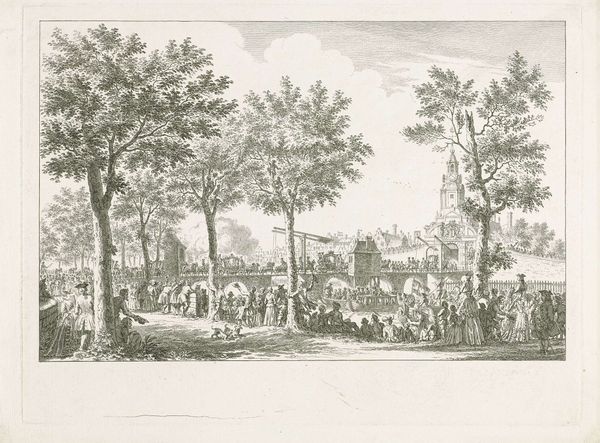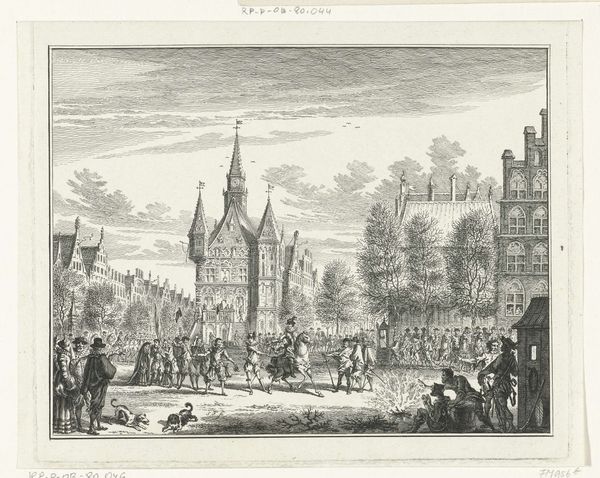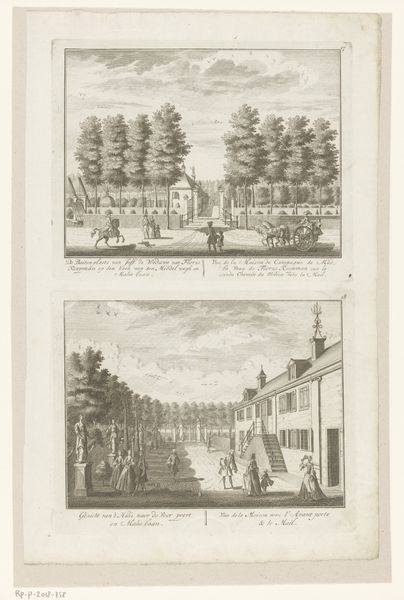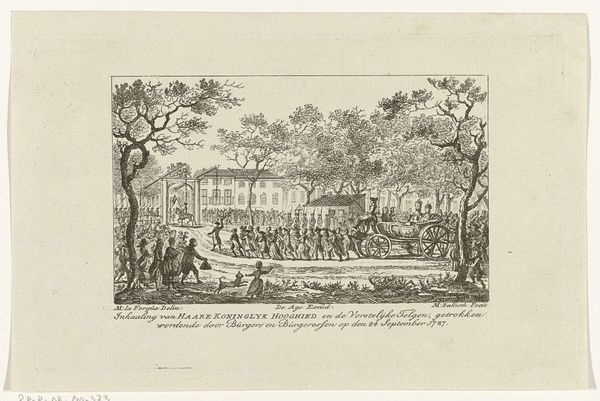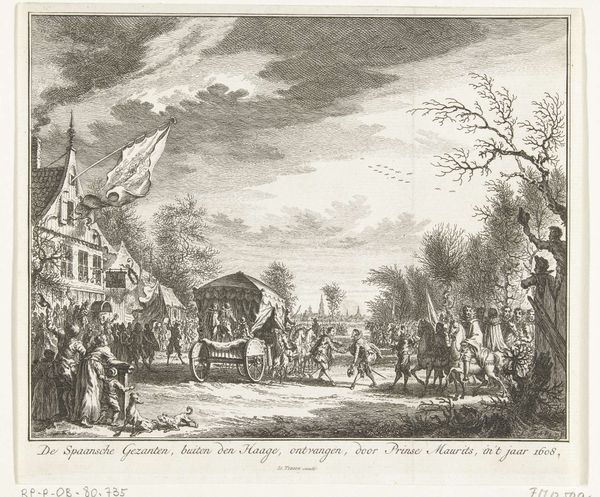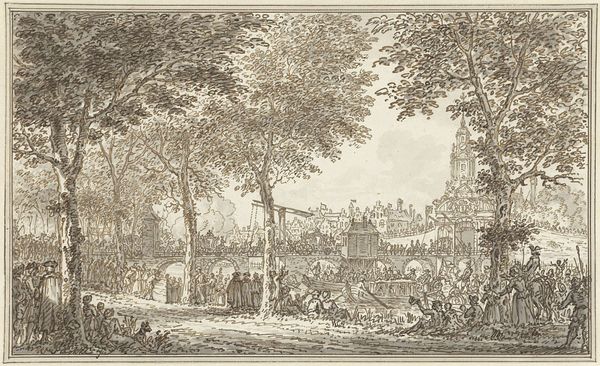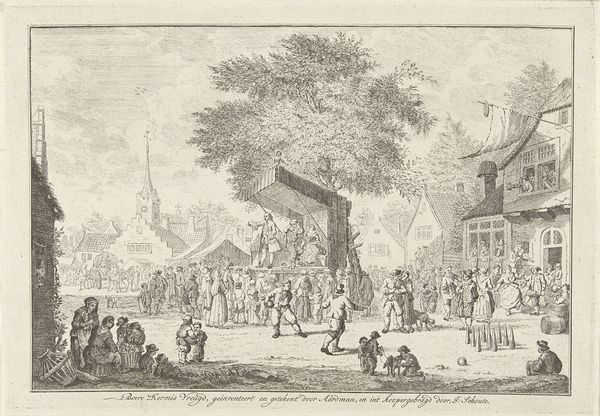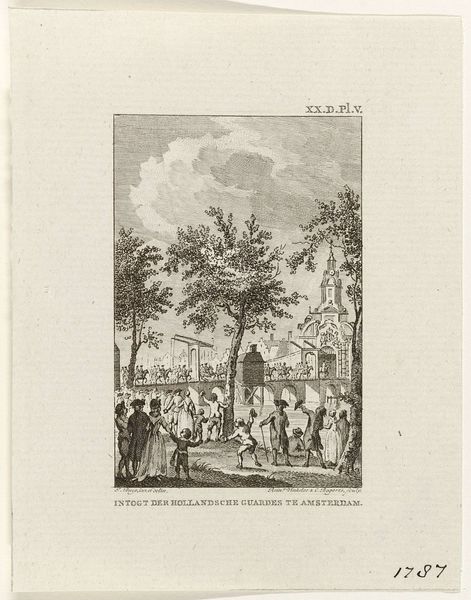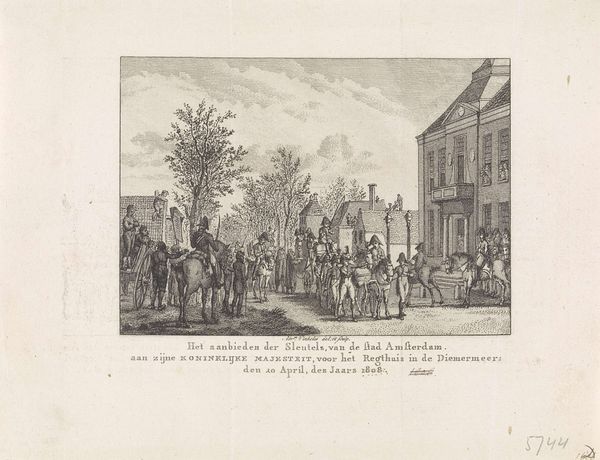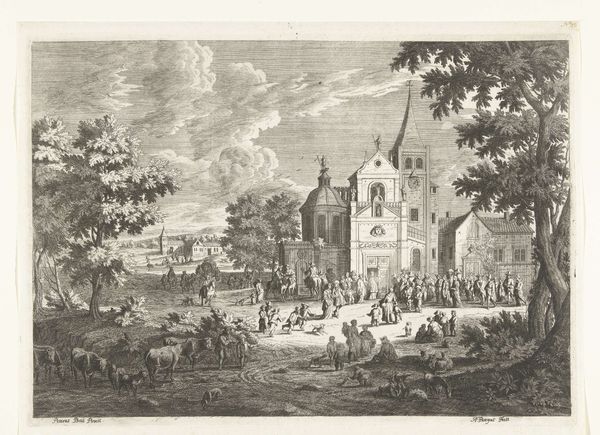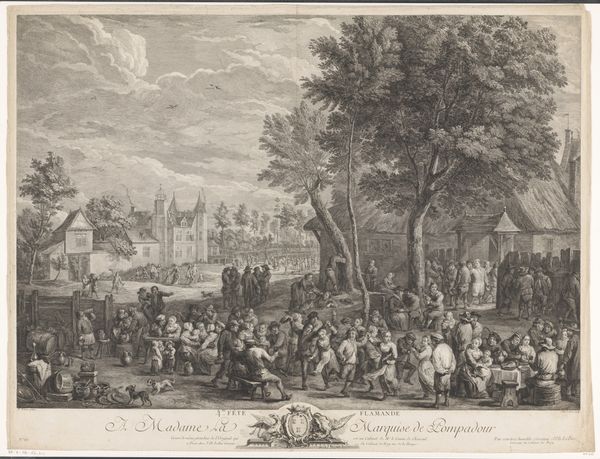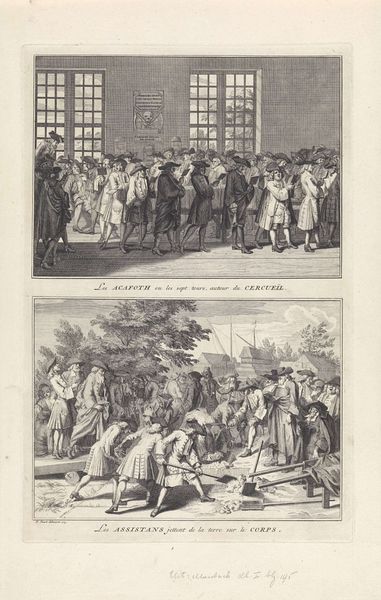
Twee voorstellingen van de aankomst bij de stad en van het aanbieden van de sleutels aan Willem IV, 1751 1753
0:00
0:00
print, engraving
#
baroque
# print
#
geometric
#
line
#
cityscape
#
history-painting
#
engraving
Dimensions: height 369 mm, width 210 mm, height 415 mm, width 255 mm
Copyright: Rijks Museum: Open Domain
Editor: So this engraving by Jan Caspar Philips from 1753, titled 'Twee voorstellingen van de aankomst bij de stad en van het aanbieden van de sleutels aan Willem IV, 1751,' depicts two scenes of William IV’s arrival in the city. It strikes me as incredibly formal, almost staged. What do you see in this piece? Curator: It is fascinating how Philips captures not just the event, but the symbolic weight of it all. Notice how the keys, physical objects representing power, are being offered. This gesture transcends a mere transaction; it speaks to submission, alliance, and the continuation of a particular social order. Look at how meticulously everyone is dressed, these repetitive shapes acting almost like the notes in a ceremonial score, underlining the theatrical elements. Do you feel any sense of expectation or anxiety radiating from the depicted bodies? Editor: Yes, now that you point it out, I see that, especially in the upper panel with the throng of onlookers, it really captures a key political moment, one rife with symbolism. Curator: Indeed. And beyond this immediate political symbolism, there is a resonance of historical memory – this moment echoes past surrenders and inaugurations. It is worth asking, what did 'giving away the keys' signify for them versus what does it signify for us today? Does seeing an action refigured throughout the centuries give that action a universal understanding, or make that action feel increasingly distant? Editor: That’s such an interesting point; seeing the historical and cultural symbolism opens up completely new ways of interpreting the piece. It becomes more than just a historical record. Curator: Exactly, and that’s the beauty of exploring visual imagery. It acts as a repository of shared cultural understanding that both changes and stays the same over time.
Comments
No comments
Be the first to comment and join the conversation on the ultimate creative platform.
